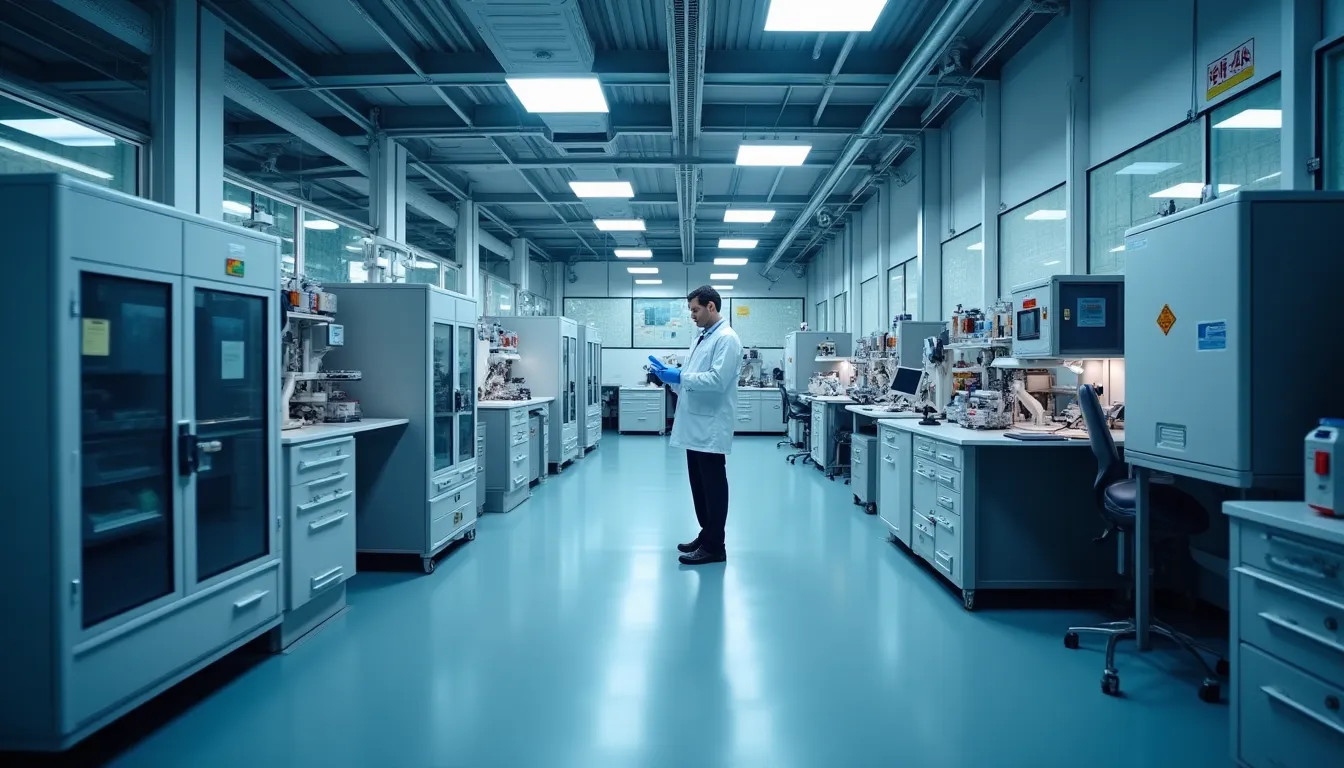As the number of satellites and other objects in orbit continues to rise, the threat of space debris has become a pressing issue for the aerospace and defense sectors. Recent developments in active debris removal missions, emerging technologies, and international cooperation signal a significant shift toward ensuring the sustainability of our orbital environment.
ClearSpace-1: A Pioneering Mission
In a landmark initiative, the European Space Agency (ESA) has contracted Swiss start-up ClearSpace SA to execute the world’s first operational active debris removal mission, ClearSpace-1, set for launch in 2025. This mission will target the upper part of a Vespa adapter, which has been floating in orbit since 2013. ClearSpace-1 will employ advanced technologies, including autonomous rendezvous capabilities, robotic arms, and vision-based AI, to capture and deorbit the debris.
ESA’s commitment of €86 million underscores a novel commercial approach to space debris removal, blending public and private investment to create a sustainable market for such services. The mission not only showcases ESA’s Clean Space technologies but also exemplifies how innovative partnerships can lead to impactful solutions in orbital debris management.
Advancements in Chinese Debris Removal Technologies
Meanwhile, China’s National Space Administration (CNSA) is actively researching and developing technologies aimed at addressing space debris. Although specific details and timelines remain undisclosed, the CNSA’s initiatives align with global efforts to enhance space situational awareness and ensure orbital sustainability. China is emphasizing the importance of collaboration with international partners and adherence to regulatory compliance regarding end-of-life satellite deorbiting.
However, the dual-use potential of these technologies—serving both civilian and military purposes—has raised concerns among experts, highlighting the need for transparency and robust international protocols. As countries like China invest in active debris removal capabilities, the global community must foster an environment conducive to cooperative and peaceful uses of space.
Innovative Technologies: The Role of Plasma Propulsion
One of the most promising advancements in debris removal technologies comes from researchers at Tohoku University in Japan, who have developed a plasma propulsion system specifically designed for space debris mitigation. This innovative technology addresses the increasing risk posed by high-velocity debris fragments, which threaten both operational satellites and crewed missions.
The plasma propulsion system operates by generating thrust through ionized gases, enabling contactless removal of debris. This method not only enhances safety but also improves the efficiency of debris mitigation efforts, potentially revolutionizing how the aerospace industry approaches the cascading debris problem known as Kessler Syndrome.
Incorporating advanced sensor modules, including precision accelerometers and quartz MEMS gyroscopes, will also be vital in enhancing the capabilities of these plasma propulsion systems. These technologies are designed to provide exceptional stability and comprehensive motion sensing, facilitating more accurate navigation and operational success in debris removal missions.
The Importance of International Cooperation
The U.S. and other leading spacefaring nations recognize the critical need for debris mitigation and removal strategies to preserve the orbital environment. NASA and the Department of Defense are pursuing research into debris removal technologies, although there is currently no dedicated government mandate for such initiatives.
International cooperation is increasingly seen as essential for managing debris removal operations and preventing geopolitical tensions. Proposed frameworks, such as Space Security Pacts and multinational monitoring centers, aim to create standardized operational procedures that promote transparency and accountability among nations.
With over 40,000 tracked objects in orbit, active debris removal is not just a technological challenge but a critical necessity. The increasing population of space debris necessitates urgent action to prevent catastrophic collisions that could have far-reaching implications for global satellite operations and space exploration.
Conclusion
The recent advancements in space debris removal technologies and missions mark a pivotal moment in the aerospace industry’s approach to orbital sustainability. Initiatives like ESA’s ClearSpace-1 and innovations in plasma propulsion systems are setting the stage for a future where space can be both utilized and preserved. As the global community collaborates to establish frameworks for transparency and cooperation, the hope is to create a safer environment for future generations of space explorers and innovators. By leveraging advanced technologies and fostering partnerships, we can tackle the pressing issue of space debris and pave the way for sustainable space operations.
References
-
China Develops Space Debris Removal Technology (nasaspacenews.com) - 10/8/2025 China confirms active space debris removal capabilities, raising dual-use concerns about military applications.
-
China is developing ways to de-orbit space junk: Should we be … (www.space.com) - 10/7/2025 A CNSA official confirmed work on space debris removal, a move seen as key for orbital sustainability but fraught with potential military …
-
Frontier no more? - Michigan Engineering News (news.engin.umich.edu) - 10/6/2025 ESA’s 2025 report found that active debris removal will be essential … space debris that are difficult to track and remove.” “I’d say …
-
Tohoku plasma propulsion breakthrough tackles space debris (www.innovationnewsnetwork.com) - 9/8/2025 Tohoku University has developed a plasma propulsion system that could revolutionise space debris removal and make Earth’s orbit safer.
-
Orbital Debris - Office of Safety and Mission Assurance (sma.nasa.gov) - 5/30/2025 The May 2025 issue of Orbital Debris Quarterly News (ODQN) is now available. … The October 2024 issue of Orbital Debris Quarterly News (ODQN) is now available.
-
ESA purchases world-first debris removal mission from start-up (www.esa.int) - 11/1/2020 As a result, in 2025, ClearSpace will launch the first active debris removal mission, ClearSpace-1, which will rendezvous, capture and take down for reentry the …
-
Plasma engine will help remove space debris from orbit (universemagazine.com) A Japanese engineer has proposed a new way to get rid of space debris without direct contact with it.



